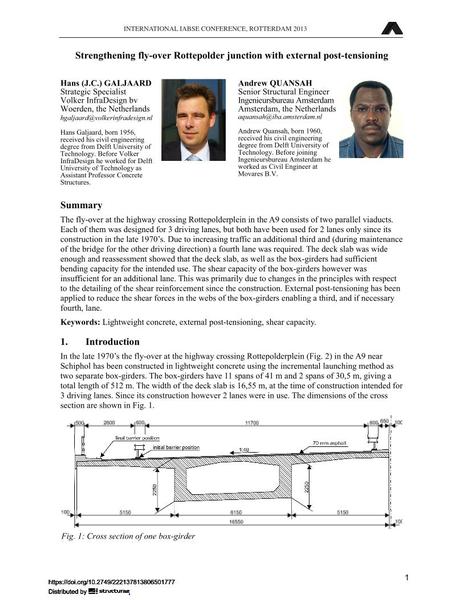Strengthening fly-over Rottepolder junction with external post-tensioning

|
|
|||||||||||
Bibliographic Details
| Author(s): |
Hans (J C. ). Galjaard
Andrew Quansah |
||||
|---|---|---|---|---|---|
| Medium: | conference paper | ||||
| Language(s): | English | ||||
| Conference: | IABSE Conference: Assessment, Upgrading and Refurbishment of Infrastructures, Rotterdam, The Netherlands, 6-8 May 2013 | ||||
| Published in: | IABSE Conference, Rotterdam, May 2013 | ||||
|
|||||
| Page(s): | 388-389 | ||||
| Total no. of pages: | 7 | ||||
| Year: | 2013 | ||||
| DOI: | 10.2749/222137813806501777 | ||||
| Abstract: |
The fly-over at the highway crossing Rottepolderplein in the A9 consists of two parallel viaducts. Each of them was designed for 3 driving lanes, but both have been used for 2 lanes only since its construction in the late 1970’s. Due to increasing traffic an additional third and (during maintenance of the bridge for the other driving direction) a fourth lane was required. The deck slab was wide enough and reassessment showed that the deck slab, as well as the box-girders had sufficient bending capacity for the intended use. The shear capacity of the box-girders however was insufficient for an additional lane. This was primarily due to changes in the principles with respect to the detailing of the shear reinforcement since the construction. External post-tensioning has been applied to reduce the shear forces in the webs of the box-girders enabling a third, and if necessary fourth, lane. |
||||
| Keywords: |
shear capacity lightweight concrete external post-tensioning
|
||||
